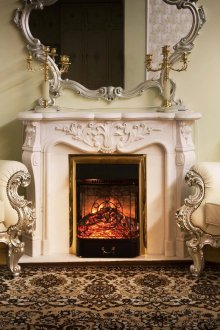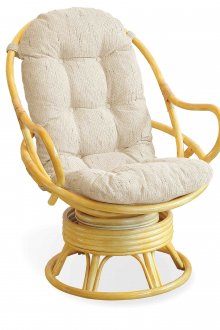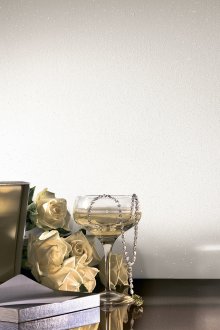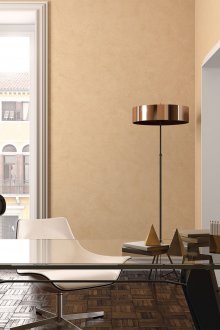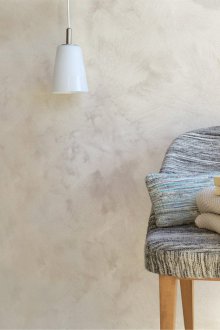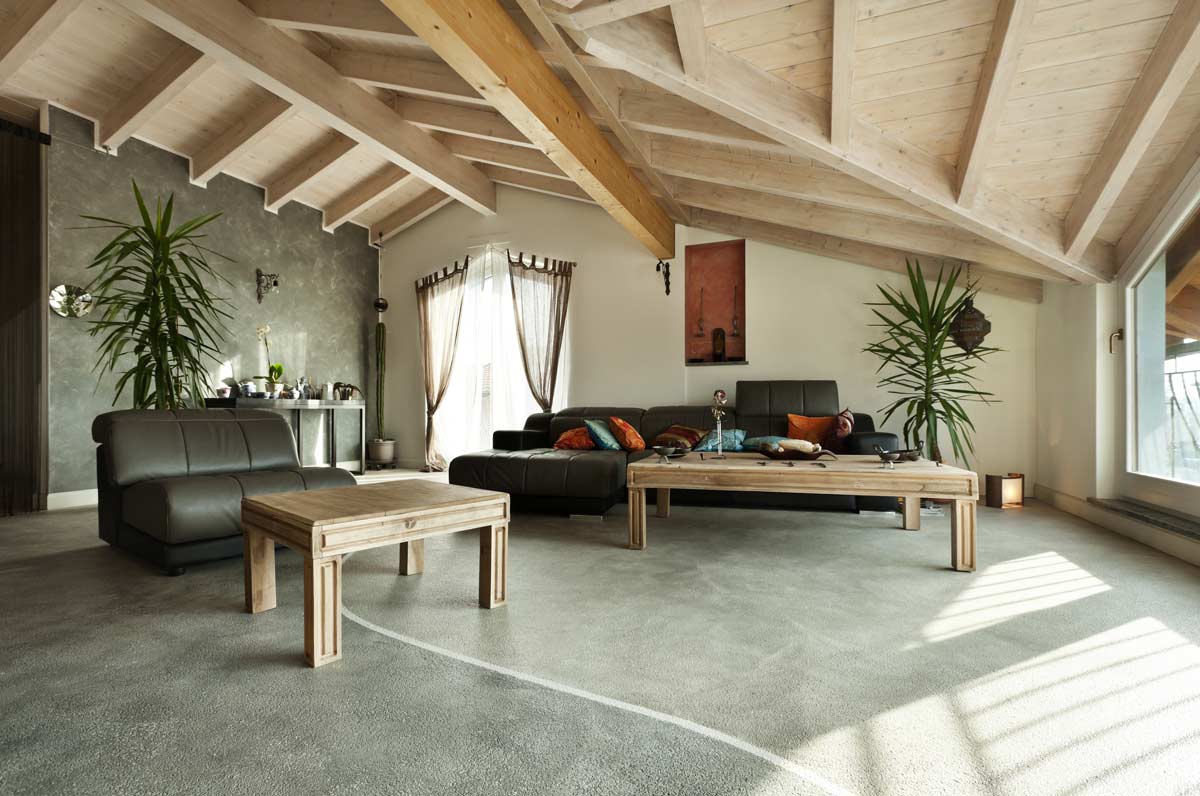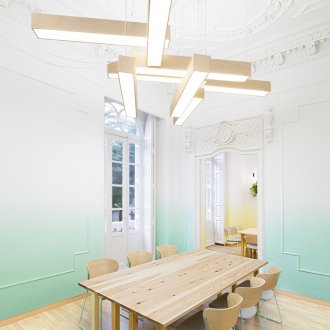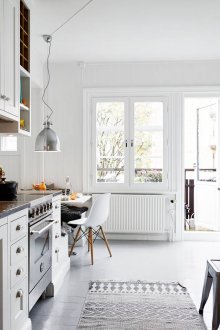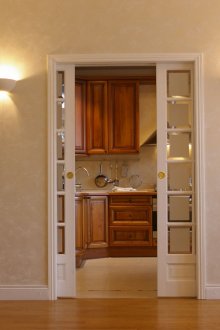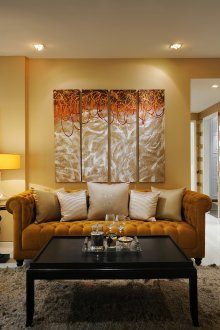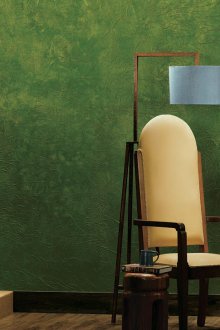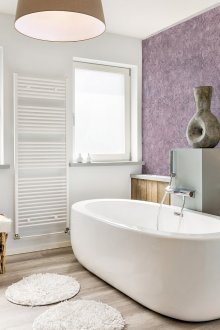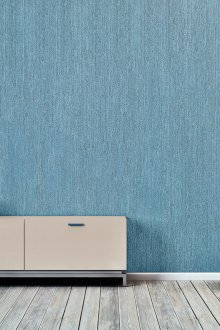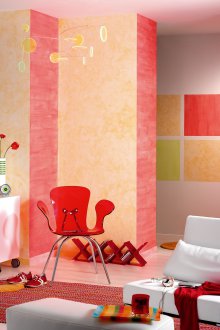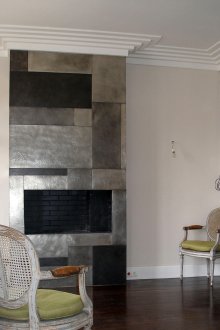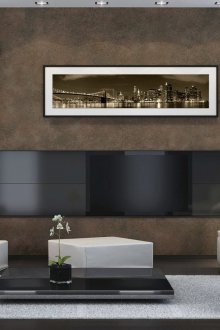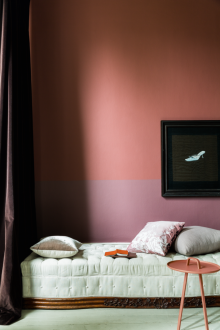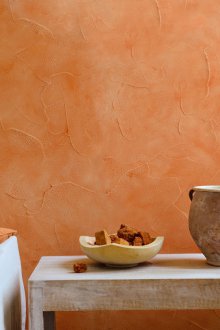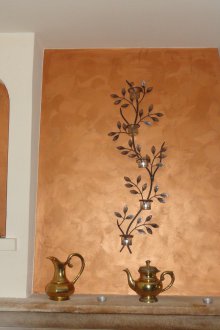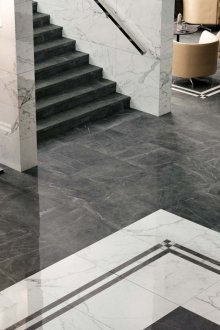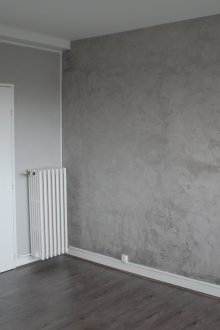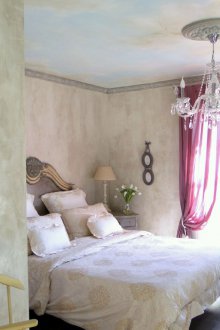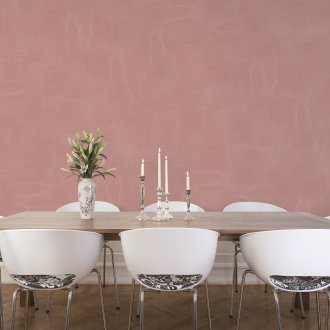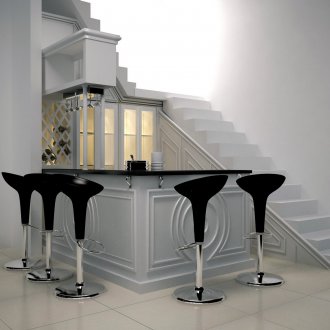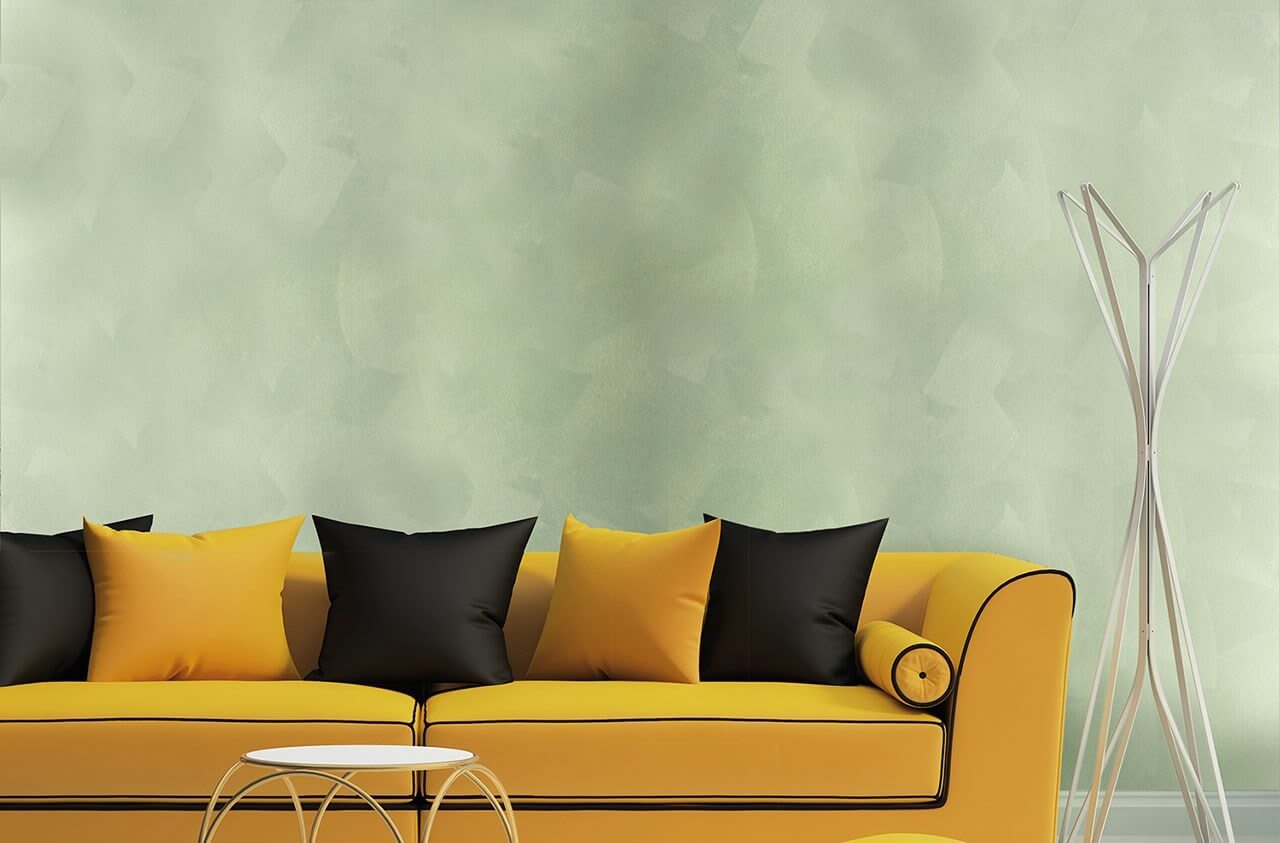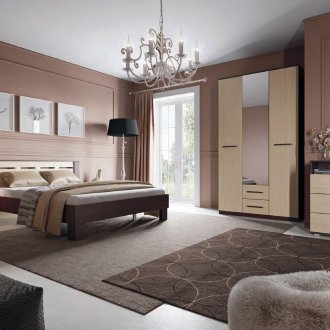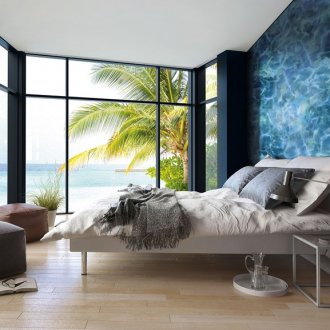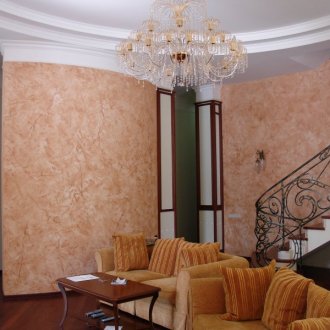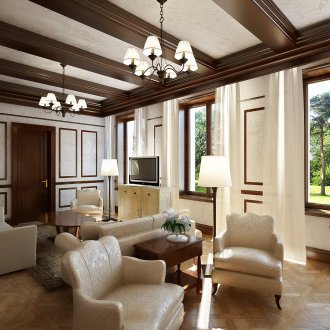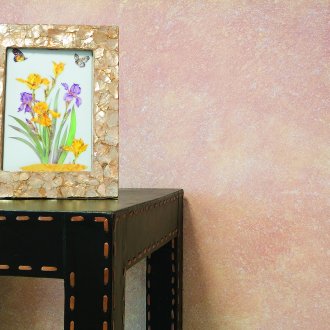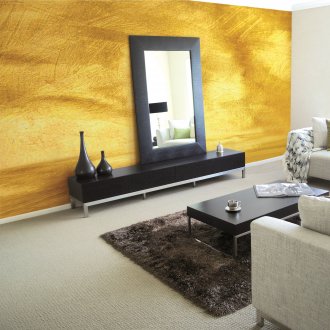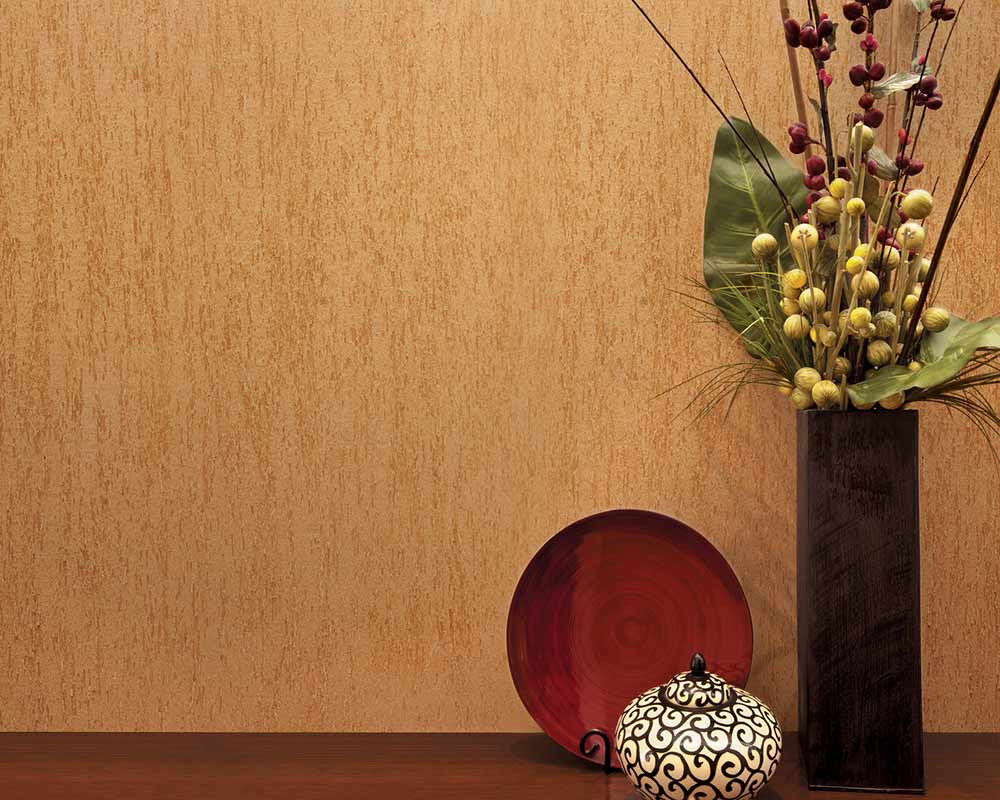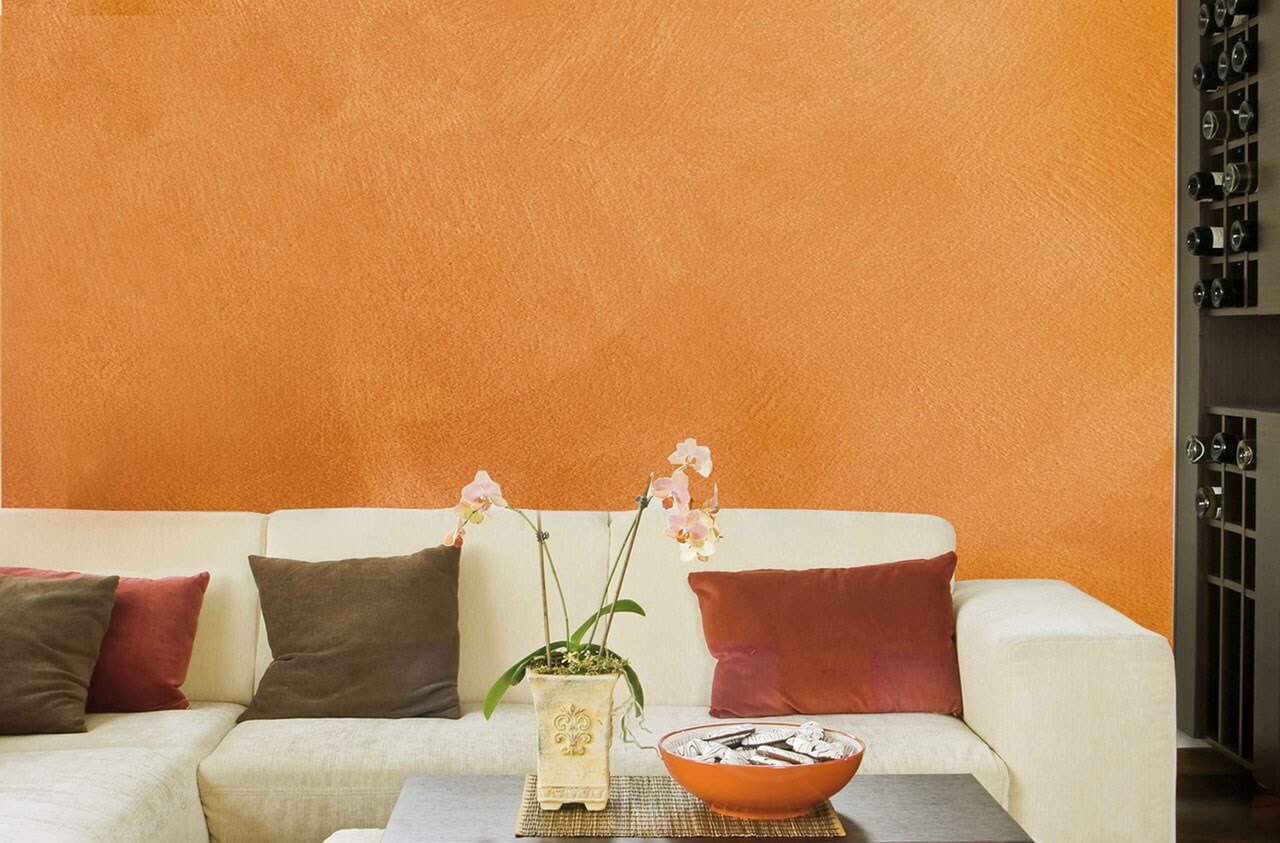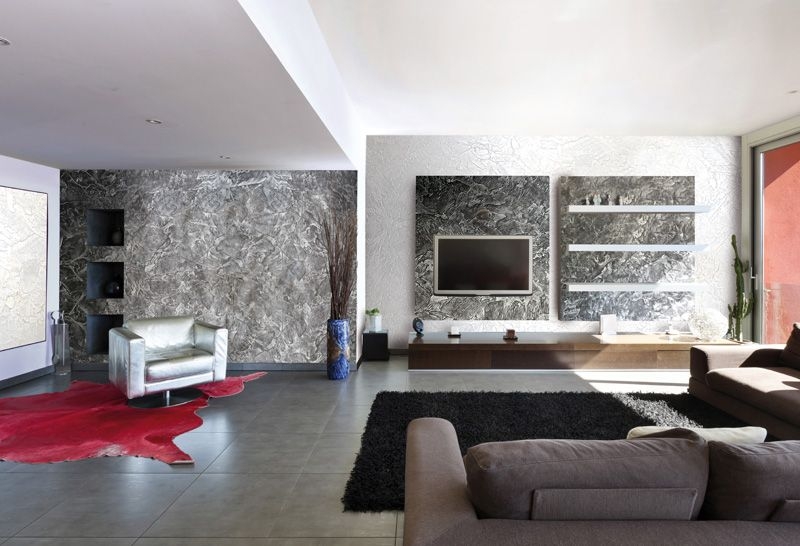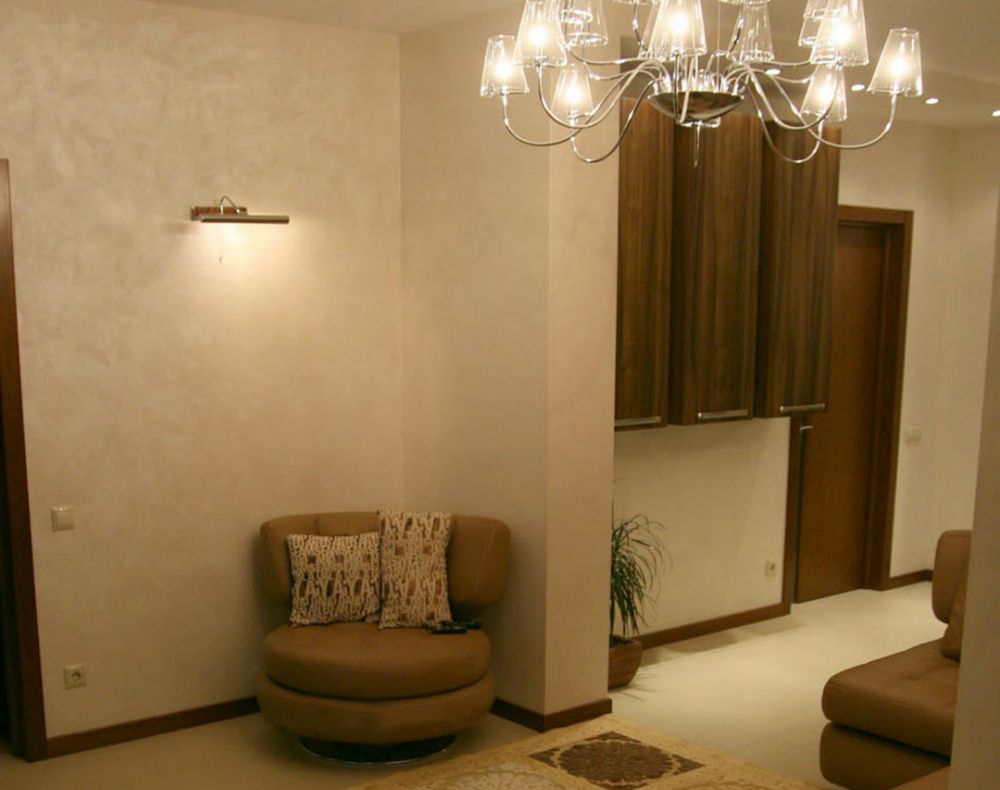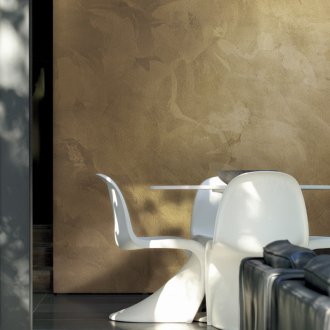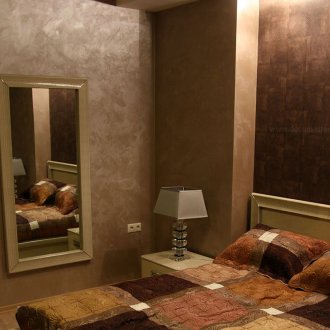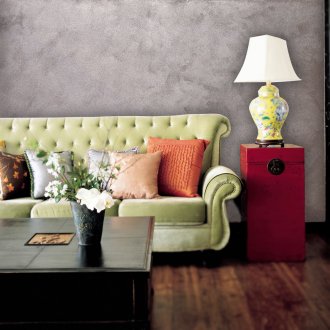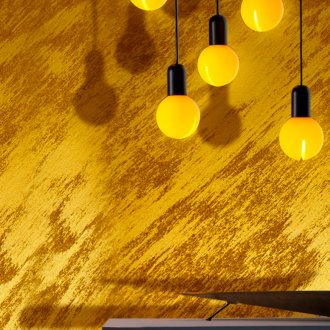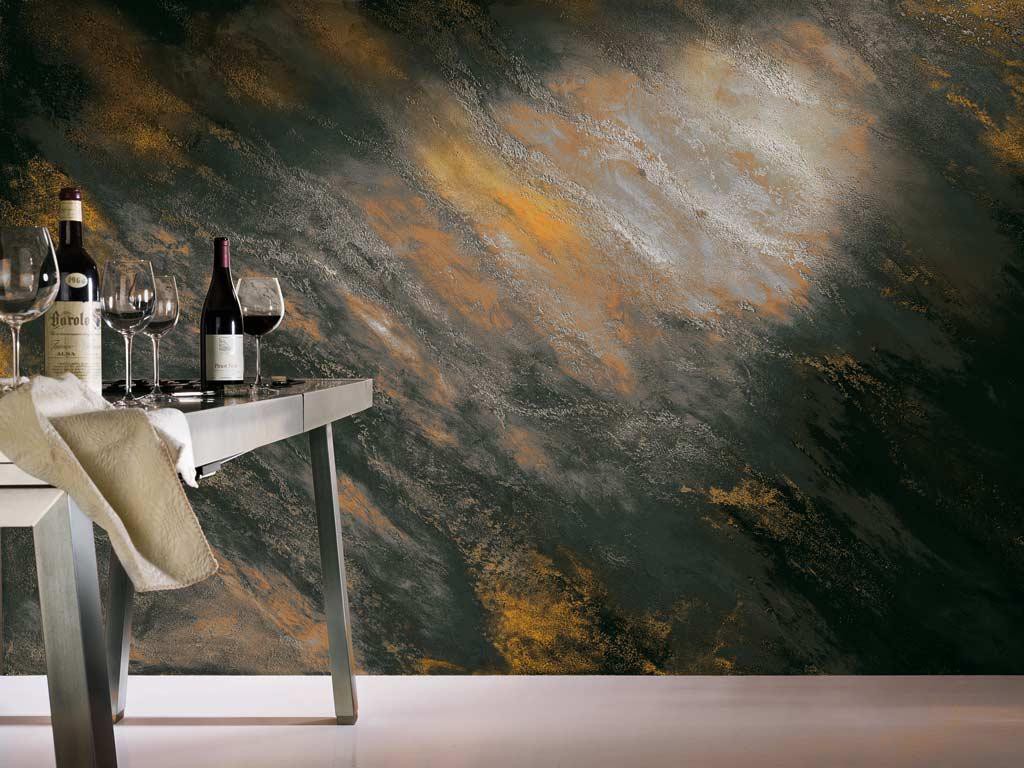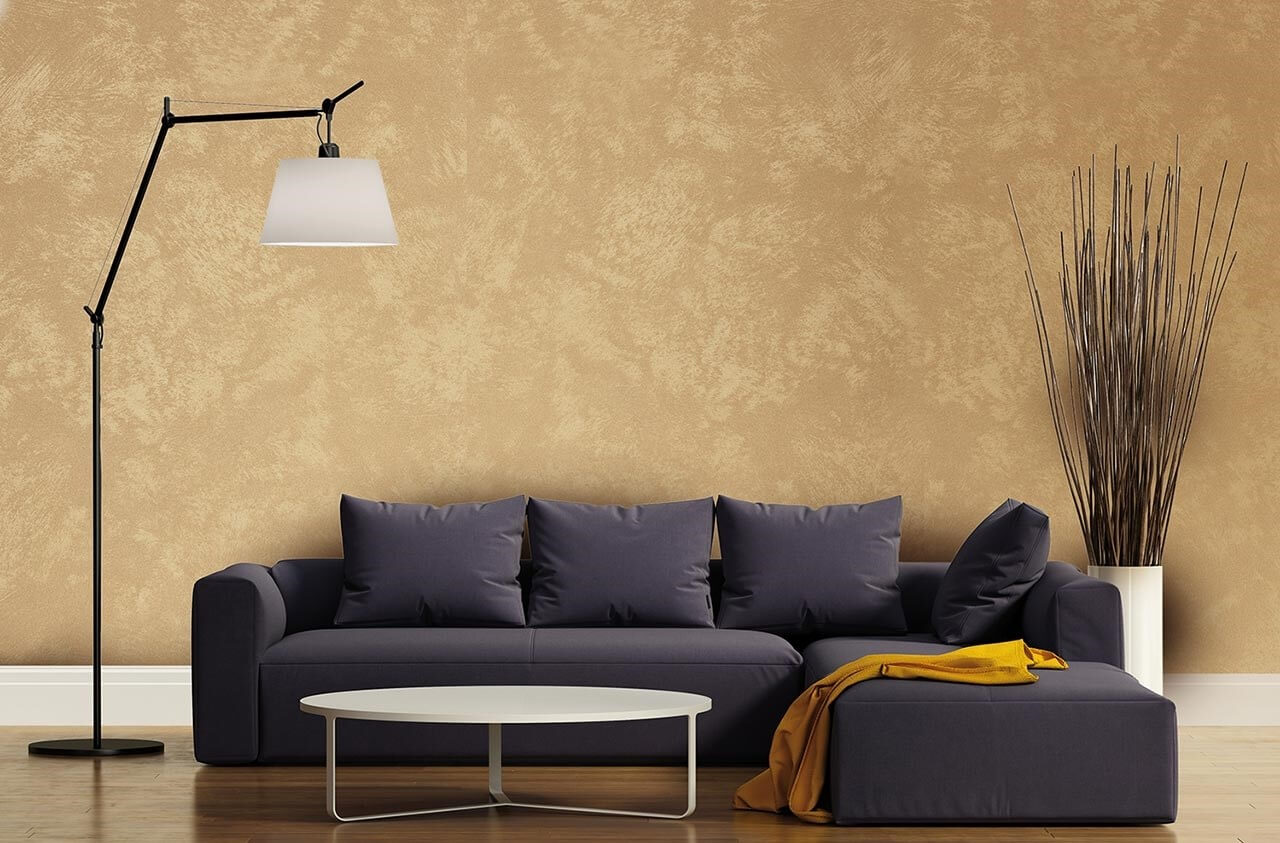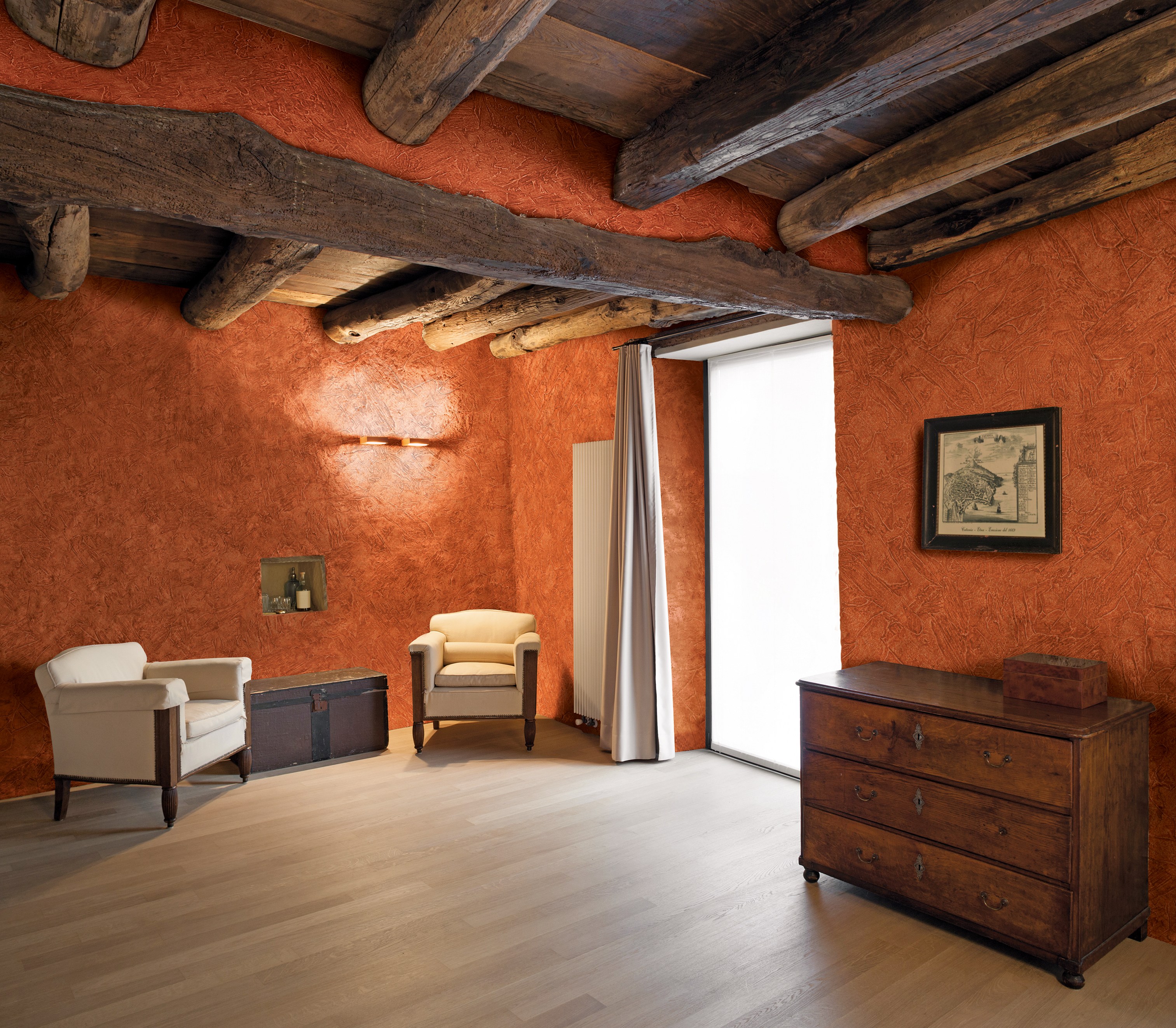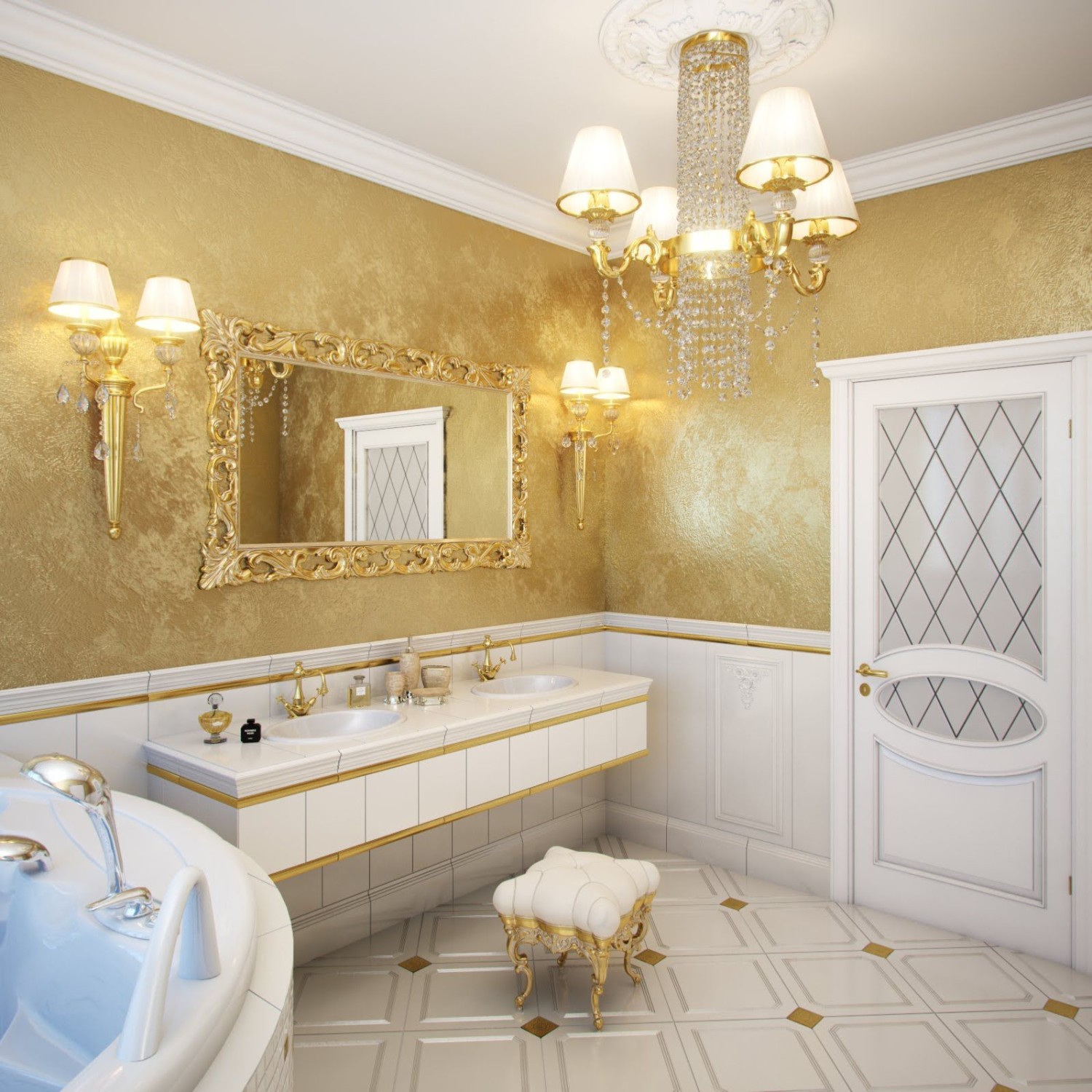Decorative paint: a variety of textures (53 photos)
Content
Decorating, making cozy your own home is fascinating, but also nervous. After all, it is important to choose the right finishing materials, not to lose the quality, color, composition and method of application, especially when repairs are done with your own hands. Previously, when it came to wall decor, the choice was not particularly tormented, it was obvious: wallpaper.
Now more and more preference is given to decorative paint, with which you can create not only the desired color of the room, but also to select the necessary texture. In order to choose what you need, not to get confused in the choice, you need to know about the features, types, advantages, other characteristics of decorative interior paints.
Differences between regular and decorative paints
First of all, it is worth noting that at least a small, but nevertheless, difference between decorative and ordinary paint for interior works exists: it is more dense in comparison with standard paints and varnishes, and also there are some additives with the help of which various effects are achieved and increased her stamina.
Using ordinary paint, you can also create different textures, however, this will require efforts, a certain kind of surface and other manipulations. Whereas painting walls with decorative paint eliminates these difficulties: drawings that imitate wood, dull or wet silk, sand, velor, mother of pearl, gold, velvet and many other coatings are easily created on any surface.
A similar effect is achieved due to the fact that decorative wall paint contains special additives and a plastic substance that enters the solvent used to dilute it. As the paint dries, its properties change - as a result, the desired decorative surface is obtained. By the way, the texture of wet silk is the most popular for covering walls.
Decorative paint for walls and ceilings is used in the interior of apartments for decorating; manufacturers produce them in a large color, textured palette, of various types.
Another advantage is the ease of application, the ability to dry quickly, which greatly simplifies the work. Many companies are engaged in the production of such paints, the most popular of which, having proven themselves in quality and a large selection: Isosilcolor, Seta, Cebostyle and others. These manufacturers also have such a popular wet silk effect paint in their product line.
Types of decorative paints
When choosing the right paint, you must follow the instructions that are indicated on the package, as well as get the advice of an experienced craftsman or seller. In addition, it is necessary to take into account the purpose of the chosen paint, where it will be used, its type and properties.
Water-based paint
The most commonly used group of paints, it is used for interior decoration.It lays well, is easy to apply and has almost no smell. Withstands washing with just water, and with all kinds of cleaning products that should be gentle. The coating is breathable due to good vapor permeability, so it lasts longer.
Decorative acrylic paint
Quickly dries, moisture resistant, that is, the painted surface can be washed without fear. Due to the acrylic resin, which is its main component, forms a protective film layer after application.
Alkyd
The advantage is ease of application, strength and elasticity, so that the painted surface does not crack. It can be used for both internal and external works. However, alkyd paint has a strong, specific smell, which is its minus. It dries quickly and is resistant to temperature fluctuations.
Latex
Excellent paint for decorating, used on any surface, whether it is smooth, decorative plaster or textured wallpaper. It lays down in a thin layer, sticks well to the surface on which it is applied, and retains color brightness for a long time. It is considered the most expensive.
Each paint is designed for specific purposes, finishing a specific surface, creating the desired texture. Therefore, first of all, it is worth deciding what effect you want to achieve, and then choose the right paint and varnish material.
Advantages and disadvantages
Any decorative material used to cover the walls, like decorative paints, has its pros and cons. The benefits include:
- Economic use. Conventional paint materials and decorative plaster have a high consumption in contrast to decorative paint, which significantly reduces the cost of finishing work.
- Large selection of effects. For those who are unconventionally suited to decorating their homes, decorative paints are a godsend, because they will help to realize almost any plan.
- Texture paint due to the particles included in its composition will help create an imitation of velvet, a wooden or metal surface, wet silk on the wall.
- In addition to a wide color palette, the line also includes chameleon colors, with a pearlescent effect, which will add variety to the interior and will change hue depending on the angle of view.
- The uniqueness and uniqueness of the surfaces treated with such paint.
- Strength and durability. The surfaces painted with decorative finishing materials will last for many years, while there will be no cracks, no exfoliation, or other mechanical defects on them.
- Lightness not only in application, but also in the coloring mixture itself. Due to the low weight of decorative paints, it is easy to work with them.
- Unlike wallpaper, dust does not settle on the painted surface.
- Environmental friendliness and safety, which is achieved due to the absence of harmful toxic components in decorative paints.
Among the disadvantages it is worth noting the following:
- small assortment in comparison with other finishing materials for walls, for example, wallpaper;
- the need for thorough preparation of the surface on which you will apply the paint;
- lack of heat-insulating ability and sound insulation, which, for example, has plaster.
Effects
Even the usual coloring of walls with decorative paints allows you to get an interesting result and texture. But if in addition to this we use special application methods, it is possible to create various additional effects. Before you start directly staining, decide what effects the future surface should differ in accordance with this, select the paint, treat the wall, prepare the tools and get to work.
Paints with various effects should be chosen according to the samples provided by each store, this will help you make the right choice.
Silk decorative paint
Polymer filings are added to its composition. The coating is resistant to temperature extremes and other atmospheric influences, and is also characterized by medium wear resistance. Finishing with paint for walls with the effect of silk, matte or wet, is quite simple, dries quickly, as it contains special substances that solidify immediately as soon as the water evaporates. So pretty quickly you can see the desired silk effect. Wet silk is often used in the interior of bedrooms.
Decorative sand paint
Due to the presence of particles of certain materials in the composition of the coloring agent (sand grains, shells, shiny minerals, and so on), it is possible to create an imitation sand dune coating.
Among them, decorative paint with sand is most in demand, with its help surfaces are created that mimic desert dunes.
However, it should be borne in mind that you need to work with texture paints using a special roller.
Decorative plaster paint
Another popular way of decorating walls, because with its help you can create many effects and textures! Decorative plaster paint helps simulate frozen waves, wind effects, sea ripples, and so on. All that is enough for fantasy.
Decorative paint with velvet or velor effect
Due to the presence of special colored particles in the paint, after drying the coloring material on the wall, a surface similar to a fabric is formed. If you do not try to feel it, it will seem that the wall is pasted over with textiles.
Decorative mother-of-pearl paint
White, gold, silver or any other color pearl paint looks bright and unusual, giving the interior an individual touch. Indeed, depending on the lighting and the angle from which to look at the painted surface, its tone will change. By the way, it is especially recommended to use paint with nacre when there is a need to visually increase the area of the room.
Marble and Granite Paint
Oddly enough, but there are no granite particles or marble in the composition. The effect is achieved thanks to acrylic, which during the process of staining and drying creates bubbles that mimic a marble or granite surface.
Metallic paint
It is most often used for painting surfaces in high-tech rooms in gold or silver.
When choosing a decorative paint, in addition to the desired texture and other characteristics, also consider it matte or glossy, what is the hiding power of the paint, is it too transparent. All this will affect the appearance of the painted surfaces. Therefore, when buying, tell the consultant in detail about all the features of the walls for painting, so that he can help you choose the right textured paint for the walls.
